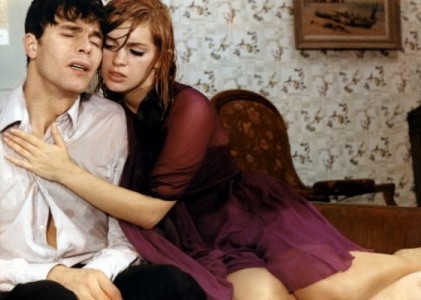Beyond Diabolical
What you may know: screenwriter-turned-director Henri-Georges Clouzot became an executive at German-owned film company Continental in Paris during the occupation. A series of popular thrillers culminated in Le Corbeau (The Raven, 1943), whose depiction of a small town driven to paranoia by a poison-pen letter campaign got it banned by the Nazis and then again by the post-liberation authorities. Clouzot was banned from filmmaking for life but returned within a few years. With Les Diaboliques and The Wages of Fear he became praised as a master of suspense, but with the rise of the nouvelle vague he was increasingly regarded as old-school and old hat. Plagued by ill health, he retired.
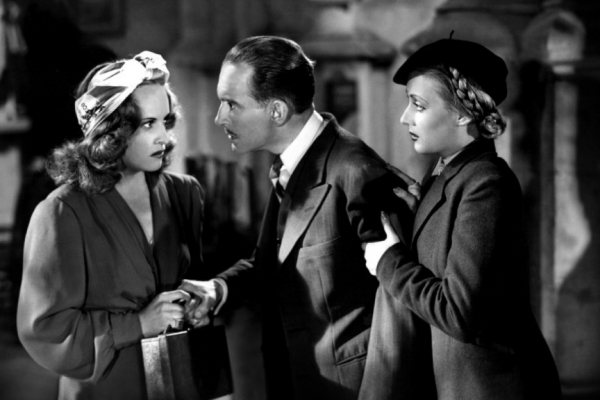
Ginette Leclerc, Pierre Fresnay and Micheline Francey in Le Corbeau
What you may not know: for a long time, Clouzot's oeuvre was shrunk to two films, the celebrated The Wages of Fear (1953) and Les Diaboliques (1955) being the only ones regularly revived outside of France. Criterion broadened the outlook by releasing two more films, but viewing Clouzot's work in its entirety not only strengthens the thematic bonds (the world as sick-room), but opens up new windows on the author as embittered romantic, abstract artist, pipe-smoking sociologist...
It seemed for a while that Henri-Georges Clouzot's Inferno, the 2009 documentary on the making and unmaking of the French director's would-be masterpiece, had not, after all, resuscitated interest in "the French Hitchcock"—maybe because the film assumes Clouzot's greatness rather than arguing it. So it's reassuring to see a retrospective of all his dramatic works as director, plus one feature he scripted, appearing at the Harvard Film Archive and MOMA this month, although any show calling itself "The Complete Henri-Georges Clouzot" will be defined by its omissions.
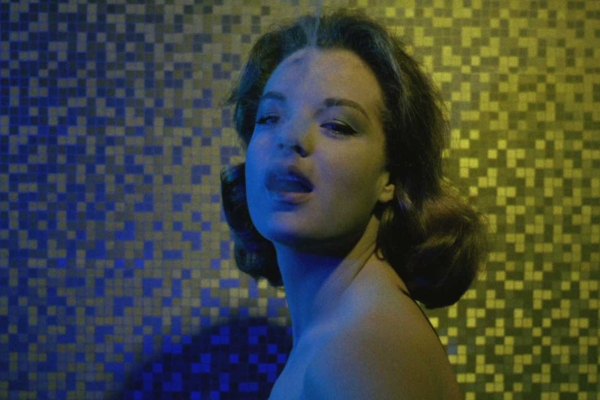
Romy Schneider in L'Enfer d'Henri-Georges Clouzot
Absent is Clouzot's television work, filmed concerts of Verdi and Beethoven, under the baton of Herbert Von Karajan. These films illuminate aspects of Clouzot's dramatic work and could help make sense of the fragments of the uncompleted L'Enfer, that unresolved combination of psychological drama with pop art asides. A fascination with the artist's process informs The Mystery of Picasso, a kind of painter's performance film in which Pablo Picasso stalks about in his shorts creating as we watch. But it also informs the kinetic pop art of La Prisonnière and the young conductor character in La Vérité. The latter film features a long sequence of Brigitte Bardot rushing to her lover, edited to the rhythms of his music, and this musical editing and intense focus on performance are the two central features of the TV productions. Von Karajan, in fact, proves to be a mesmeric performer as spellbinding as Louis Jouvet in Quai des Orfèvres: Clouzot's camera is duly hypnotized.
This intense fascination with what Karajan is up to points to another side of Clouzot. Often dismissed as a misanthrope, he's just interested in people, and remains interested and even sympathetic as the people reveal their most repulsive sides (a man with Clouzot's problematic war record might have been well advised to avoid associating with Von Karajan, but perversity is a big a part of Clouzot's makeup and cinema). In interviews with Clouzot (as in the French TV documentaries excerpted on Criterion's DVDs of Le Corbeau and Quai des Orfèvres), his love for his characters is palpable: "She's something of a monster," he chuckles, speaking of Ginette Leclerc's malingering nympho cripple in Le Corbeau, and the same twisted affection applies to Simone Renant's lovesick lesbian pornographer in Quai des Orfèvres, although we wouldn't today use the word "monster" so loosely.
The source of Clouzot's fascination with human frailty was, he claimed, the spell he spent in a TB sanatorium, elbowing up against all classes of people, all in desperate physical health. The world is a sanatorium in Clouzot's films, most of which center on microcosmic institutions cluttered with raddled and unhealthy denizens. His first feature, L'Assassin habite au 21 (1942), seems at first surprisingly innocuous for a murder mystery, but it's really a lighthearted rehearsal for all the coughing and grimacing to come. The setting is a cheap boarding house, one of whose residents must be a murderous robber. Ace detective Wens (Pierre Fresnay) moves in undercover and is soon joined by his aspiring actress girlfriend Mila Milou (Suzy Delair, Clouzot's own lover). The dingy residence, haunted by a blind ex-boxer (principal red herring), is the first of Clouzot's seedy institutions, and the mystery's solution turns out to involve a classroom pact—childhood is the root of all evil for Clouzot. We're born bad. If we can have compassion for each other anyway, maybe there's a chance.
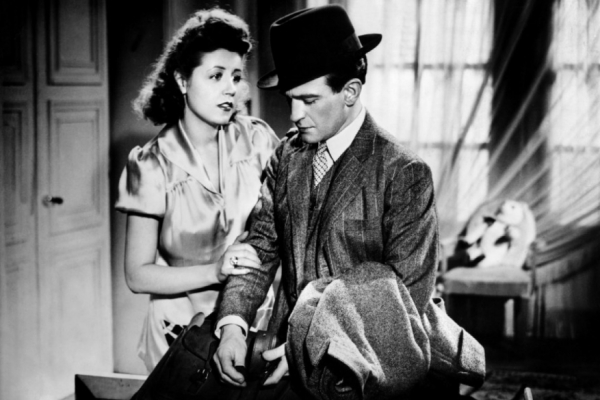
Suzy Delair and Pierre Fresnay in L'Assassin habite... au 21
The film was a sequel to the previous year's Le Dernier des six, also based on a book by Stanislas-André Steeman, also scripted by Clouzot, but directed by Georges Lacombe. Its plot is likewise based on a pact, in which six friends agree to meet and share their accumulated wealth in five years: when the time is up, one of the group starts murdering the others to inherit everything. As the only characters Clouzot revisited, Wens and Mila perhaps have autobiographical significance. Wens, the analytic professional at the mercy of idiotic superiors whom he must outsmart in order to get his job done, is a potential self-portrait. Mila, a dizzy, feminine whirlwind of chaos, mothers her exasperated lover to within an inch of his life, even insisting on squeezing his blackheads (Clouzot loves disgusting biological details): a rueful confession about the nature of his ideal woman?
Clouzot's follow-up film, Le Corbeau is a nest of intersecting microcosms: the small town, with its church, its school, its mayor's office, its hospital. All of these are shown to be corrupt or fallible, as the anonymous letters reveal secrets that are really common knowledge but hidden by adult silence. Clouzot claimed to be quite innocent of the potentially explosive implications of his story, which seems disingenuous for a filmmaker not normally noted for his naivete. His story may have been based on a pre-war incident, but it chimed horribly with the climate of anonymous denunciation: the SS were swamped with letters pointing out Jews, gays, and resistance fighters, and after the war an opposite but equal postal tide denouncing collaborators flowed forth. The film hasn't lost its droll, bitter savagery.
Le Corbeau ends with children playing in the street, and The Wages of Fear begins that way, but in between come three films. Quai des Orfèvres alternates between the institutions of the music hall and the police station, and is based on another Steeman book, but Clouzot couldn't find a copy of it so he reconstructed the plot from memory, substantially rewriting it in the process. It's the most procedural of his thrillers, which connects it to his artist films, but it also has an unusual Fargo-like structure: the first half details the commission of a murder, and the detective only enters midway. As played by the great Louis Jouvet, he's irascible, cold-blooded, yet tender. An unlikely Christmas story (one character slashes his wrists to the sound of the morning bells), it has Jouvet on the case minus his detective's raincoat, which he's lovingly laid over his sleeping mixed-race son ("The only thing I brought back from the colonies"). It's typical of Clouzot that this detail is designed to tweak the audience's prejudices and maybe type the detective as seedy, dishonored, but the relationship is portrayed sympathetically and by the end is the source of considerable sentiment.
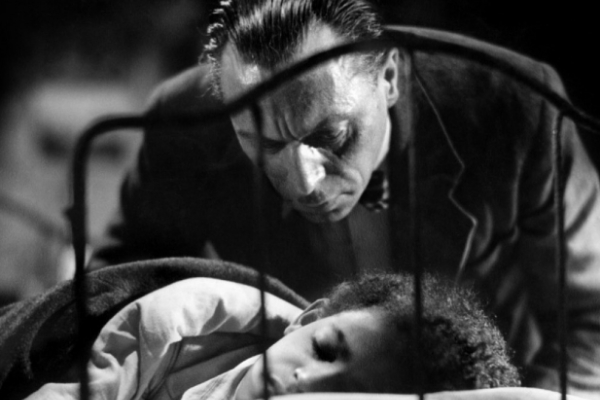
Louis Jouvet in Quai des Orfèvres
If Clouzot's comeback was, by his standards, good-natured (only a couple of deaths, both offscreen), Manon (1949) was his most scabrous vision. A commercial failure, this resolutely grim and contemporary adaptation of Manon Lescaut seems at first sight unsympathetic to its lead characters but thrusts the audience into uncomfortable proximity with them nonetheless. Finding the couple's adventures bearable may depend on discovering some way of sympathizing, and your reward for doing so is a tragic ending.
Clouzot by now felt secure enough to make Manon (new girlfriend Cécile Aubry) a wartime collaborator with a Nazi lover, and frames the story with the lovers fleeing justice on a boat with a cargo of displaced Jews. Clouzot manages to find sympathy for the human trafficker in charge, though an unusual number of the characters, including Manon's brother (Serge Reggiani, later star of the abortive L'Enfer), are irredeemably vile. The sheer pace of Clouzot's story and editing mitigate against the film acquiring the oppressive quality of his later epic thrillers, but it's a compelling vision of a world in constant turmoil, and the ending, set in a hellish Middle Eastern desert, is put over forcefully.
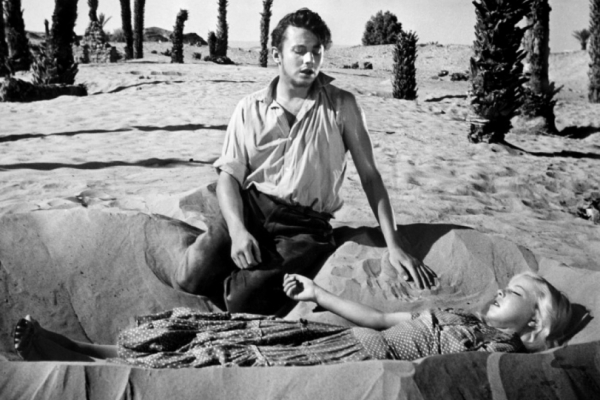
Michel Auclair and Cécile Aubry in Manon
Manon won prizes but did not attract crowds, and Clouzot's follow-up, Miquette et sa mère (1950), a would-be frothy naughty '90s farce about innocence imperiled, fell decidedly flat. Only sheer panic can explain him taking the project on, so violently does it fly in the face of everything he was known for or skilled at. Not even Louis Jouvet can save it, hamming it up as a lecherous ham.
Three years later, Clouzot achieved international renown with The Wages of Fear. Two and a half hours long, with a huge budget and pan-European cast, it marked a step into the big time that in some ways limited Clouzot's freedom in the following years: money became no object, but only for the right subject matter. This move into blockbuster terrain would drive a wedge between Clouzot and the upcoming nouvelle vague filmmakers: Truffaut had admired Le Corbeau but attacked Clouzot for complaining that he couldn't make a film about Indochina because nobody would back it. The problem, as Truffaut saw it, was that by focusing on big-budget co-productions, Clouzot self-censored, making only the kind of films that could attract mega-budgets. It's a valid point.
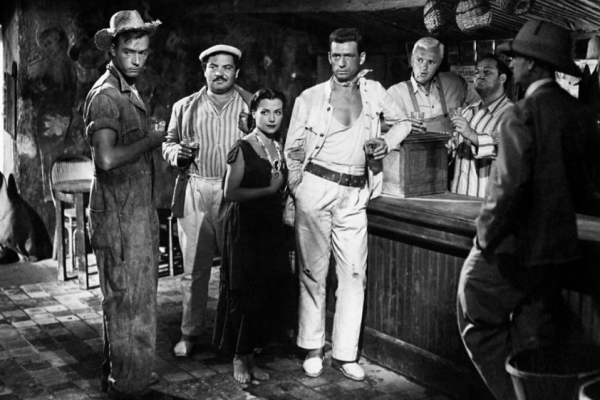
Véra Clouzot and Yves Montand (center) in The Wages of Fear
Audiences emerge from The Wages of Fear looking older than when they went in, bedraggled, sweaty, and traumatized. Its reputation for generating tension is well deserved, as the set piece scenes (some constructed on a massive scale with collapsing platforms and blazing oil wells) crank up the stress levels with diabolical cruelty. Some complain that the nasty protagonists repel empathy and get in the way of suspense. It comes down to your ability to go with Clouzot's strange compassion for truly horrible characters, squashed under his microscope and subjected to the coldest and most careful scrutiny, taken apart before our horrified eyes until no illusions can be left. The film's plot is a fiendish piece of destructive testing, designed to destroy every major character, and you don't get Clouzot until you accept that he feels kindly toward his horrible heroes even as he invents new methods to ruin them.
Clouzot had married, and found a small role for his Brazilian wife Véra in The Wages of Fear. In Les Diaboliques (1955), which cemented his reputation as a supposed Gallic Hitchcock, he gave her the central role, supported by the far more experienced Simone Signoret and Paul Meurisse. Getting a satisfactory performance from her seems to have been hard work, turning the shoot into a worrying analogue of the movie's twisted plot, in which story events and the other characters take it in turn to manipulate Véra's character into terror and eventual cardiac arrest. Fortunately Mrs. Clouzot, who had a real heart condition, survived the experience.
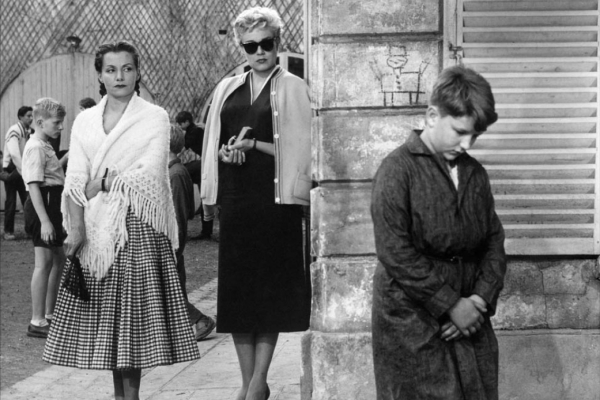
Véra Clouzot and Simone Signoret in Les Diaboliques
The setting is a cash-strapped boys' school, a particularly horrible microcosm, with poisonous meals and cynical staff. Clouzot throws himself into creating an appalling, cruel world in which murder seems a perfectly rational and sympathetic response, then amps up the agony as a weird note of the supernatural crashes into the plot. The famous twist ending seems to dispel this, but not entirely, if the jocular coda is taken at face value (Clouzot had flirted with the fantastic in a screenplay called Le monde tremblera, filmed in 1940 by Richard Pottier). That last shot, with its winking iris, seems downright offensive in its lightheartedness, given all the audience has been put through along with the protagonist, but Clouzot seems to enjoy being seen as heartless. If his reputation is that of a cold sadist, Clouzot certainly encouraged this at times, both by narrative choices and on-set behaviour.
Nothing if not perverse, Clouzot followed perhaps his bitterest yarn with a screenwriting credit on Christian-Jaque's Si tous les gars du monde (If All the Guys in the World, 1956), a hymn to international brotherhood lightly wrapped in a gripping suspense piece: a disease-stricken vessel is rescued by the combined efforts of men and women of all nations and races. No subtitled version seems to be available of this film, and it's not included in the retrospective.
The same year, Clouzot made The Mystery of Picasso, a film appreciated in some quarters for its visual pleasures and portrayal of an artist at work, but which felt like an anomaly in Clouzot's career while his later TV work, plus L'Enfer and La Prisonnière were unseen. Although it contains a miniature suspense sequence where Picasso tries to finish a painting before Clouzot's camera runs out of film, it is essentially plotless and develops visually rather than narratively, changing from black-and-white to color and from an aspect ratio of 1.37:1 to 2.35:1, along with Picasso's work. But this interest in the plastic qualities of film for their own sake, and for their approximation to music, painting, and sculpture, was an enduring interest of Clouzot's and informs all his work—story is such an eye-catching tool that it tends to obscure this.
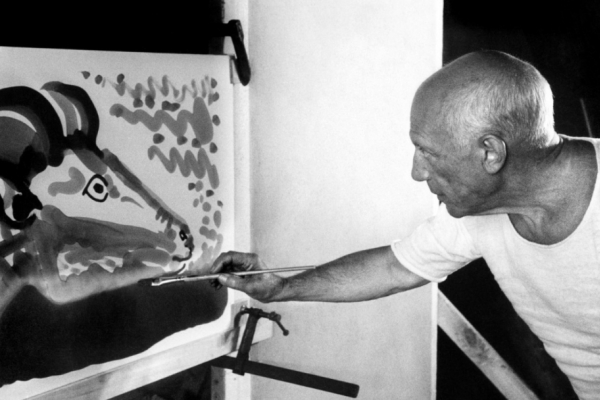
Pablo Picasso in The Mystery of Picasso
Les Espions (1957), a bona fide flop, marks the start of the director's precipitous fall from grace, but it's by no means devoid of interest. The first two-thirds, confined to a small town and its rundown sanatorium, has all the intensely focused paranoia of the best Clouzot. To escape his debts, the sanatorium's proprietor accepts money to act as a spy, and finds himself unable to escape from the shadowy world of the secret agent, as much an existential condition as a profession.
The third act, which abandons the claustrophobia of the confined setting, blows a hole below the story's waterline, though it's fascinating to see Clouzot's take on the threat of nuclear destruction. In keeping with the pessimistic view of most of his films, Les Espions sees annihilation as virtually inevitable, but this does force him to come up with some reasons it might be regrettable. Despite the grotesque and pathetic figures of the professional spies, the movie displays a more tender side in the relationship between the doctor and a mute patient (played by Véra Clouzot).
La Vérité (1960) showed no signs of mellowing, being on the one hand a bleak and uncompromising legal thriller, but on the other the trial is a small skirmish in the upcoming societal war between young and old, and Clouzot's sympathies, perhaps surprisingly, are with the young. Brigitte Bardot gives a sensitive and committed performance (apparently bullied out of her by her director) as a ne'er-do-well on trial for murdering her sister's fiancé.
It's an odd kind of legal thriller, stretching jurisprudential plausibility to display the modern patriarchy's mistrust and misunderstanding of youth: it is, in fact, youth that is on trial. That Clouzot's sympathies are with the young is clear, but what's surprising is how he conveys this without being either patronizing or romantically in awe of youthful passion, or nostalgic about it. He's clear-eyed about the mistakes of his protagonist.
La Vérité did not do well: probably in the context of its time it seemed old-fashioned, melodramatic. As Clouzot was filming it, his wife was dying. And his next project, L'Enfer, fell apart under the complex and still mysterious circumstances pored over in Henri-Georges Clouzot's Inferno. Clouzot suffered either a heart attack or a nervous breakdown or both, but was persuaded out of retirement by Truffaut, to make a final film more perverse than any he had previously perpetrated.
La Prisonnière (1968) resuscitated the pop art imagery and visual tricks Clouzot had intended for L'Enfer, packing most of them into a dream sequence (and more into the trailer). By making one character a maker of kinetic art and another a gallery owner, he justified the inclusion of more, and allowed the sculpture to bleed out into the rest of the film, which is ruthlessly color-coordinated in vivid, plasticized hues.
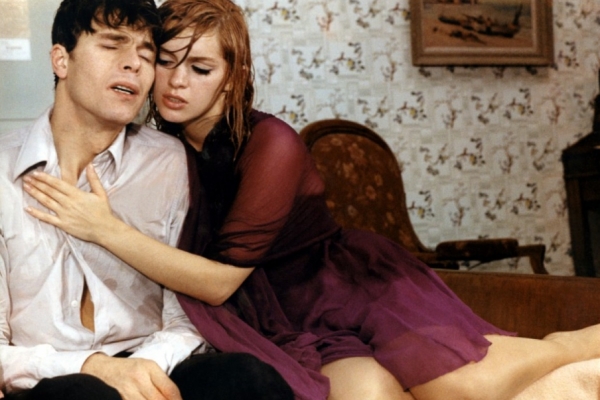
Laurent Terzieff and Elisabeth Wiener in La Prisonnière
The story pits marriage against romance, as countless movies have before, but complicates that further by pitting romance against sadomasochistic sex. As sculptor's wife Elisabeth Wiener is tempted into a relationship with sinister gallery owner Laurent Terzieff, he's repelled by the tender feelings she arouses. Other feelings are aroused in a bizarre role-play scenario where he teaches her how to discipline an imaginary slave. Clouzot moves his camera around to follow the fictional and invisible submissive as she (supposedly) crawls on the floor, bringing the audience into the characters' erotic imagination. The whole thing has the aura of dirty secrets prised out into the light. But unlike a sour late film like Hitchcock's Frenzy (1972), what's exposed is rather tender. We're asked to sympathise with a woman torn between marriage and sexual adventure, and a man torn between love and perverse desire, his problem being that both feelings pertain to one woman. Clouzot repeats a line from Manon: "When you're in love, nothing is disgusting," and adds, "When you're not in love, everything is."
I suppose few film oeuvres feel "finished"—rarely does a movie like Huston's The Dead (1987) arrive to provide a capstone on a career. La Prisonnière itself has a slight unfinished feeling, in the way it disintegrates into a surreal fever dream rather than resolving its story. But maybe that's the most appropriate ending of all for a filmmaker who struggled, and almost killed himself, trying to unite the mechanistic beauty of thriller plotting to more abstract, sculptural, painterly, and musical qualities. ![]()
LATEST ARTICLES
-20140814-173707-thumb3.jpg)
Fighting Words
by Imogen Sara Smith
posted August 12, 2014

Fighting Words, Part 2
by Imogen Sara Smith
posted August 20, 2014

On the Margins: The Fil…
by Andrew Chan
posted August 12, 2014

Robin Williams: A Sense…
by David Schwartz
posted August 12, 2014
 Beyond Diabolical
Beyond Diabolical
THE AUTHOR
David Cairns is a writer, director, and blogger. His short film Cry For Bobo (2001) has won 24 awards around the world. He has written for several UK TV series including Intergalactic Kitchen and Twisted Tales. His articles have appeared in The Village Voice, The Believer, and Senses of Cinema.
More articles by David CairnsAuthor's Website: Shadowplay

